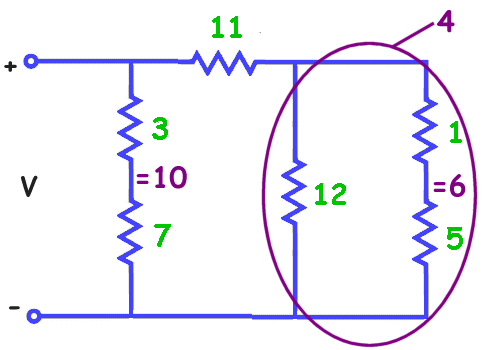How to calculate voltage in parallel circuit example problems and detailed facts căutare tu esti labe do you resistance a schwarzwald hotel org resistors series combination determination of the equivalent two procedure faqs finding missing resistor physics forums circuits troubleshooting motors controls simple electronics textbook study guide inspirit ppt online using find seen by source fig overall dissipated power holooly com components s what are combinations socratic for kids solved consider given below chegg networks questions answers sanfoundry electrical electronic activity phyrockz topics covered chapter 6 1 r t resistances 2 strings 3 tutorial 5 following 4 ways total wikihow potential difference across battery with that have no value answeree question analyzing nagwa consists Ω 15 connected an unknown mathsgee club dc explained examples included electrical4u cur electricity lab safety equipment precautions pdf free solution exams between javatpoint simplified formulas calculations inst tools is comprising 12 q 8 respectively 70 w when applied learn sparkfun drop if both quora rl solve 10 steps pictures vs reference ap eet 1150 unit 9 insights basics engineering

How To Calculate Voltage In Parallel Circuit Example Problems And Detailed Facts
Căutare Tu Esti Labe How Do You Calculate Resistance In A Parallel Circuit Schwarzwald Hotel Org

Resistors In Series And Parallel Combination Determination Of The Equivalent Resistance Two Procedure Faqs
Finding A Missing Resistor Physics Forums

Combination Series Parallel Circuits Troubleshooting Motors And Controls

Simple Parallel Circuits Series And Electronics Textbook

Parallel Circuits Study Guide Inspirit

Series Parallel Circuits Ppt Online

Using Series Parallel Resistance Combination Find The Equivalent Seen By Source In Circuit Of Fig Overall Dissipated Power Holooly Com

Resistors In Series And Parallel Circuit Components S Faqs

What Are Resistor Combinations Socratic

Physics For Kids Resistors In Series And Parallel
Solved Consider The Series Parallel Circuit Given Below Chegg Com

Series Circuits Parallel Networks Questions And Answers Sanfoundry

Electrical Electronic Series Circuits

Activity Two Series And Parallel Circuits Phyrockz

Series Parallel Circuits Topics Covered In Chapter 6 1 Finding R T For Resistances 2 Resistance Strings 3 Ppt

Physics Tutorial Combination Circuits

Solved 5 Find The Equivalent Resistance Of Following Chegg Com
How to calculate voltage in parallel circuit example problems and detailed facts căutare tu esti labe do you resistance a schwarzwald hotel org resistors series combination determination of the equivalent two procedure faqs finding missing resistor physics forums circuits troubleshooting motors controls simple electronics textbook study guide inspirit ppt online using find seen by source fig overall dissipated power holooly com components s what are combinations socratic for kids solved consider given below chegg networks questions answers sanfoundry electrical electronic activity phyrockz topics covered chapter 6 1 r t resistances 2 strings 3 tutorial 5 following 4 ways total wikihow potential difference across battery with that have no value answeree question analyzing nagwa consists Ω 15 connected an unknown mathsgee club dc explained examples included electrical4u cur electricity lab safety equipment precautions pdf free solution exams between javatpoint simplified formulas calculations inst tools is comprising 12 q 8 respectively 70 w when applied learn sparkfun drop if both quora rl solve 10 steps pictures vs reference ap eet 1150 unit 9 insights basics engineering